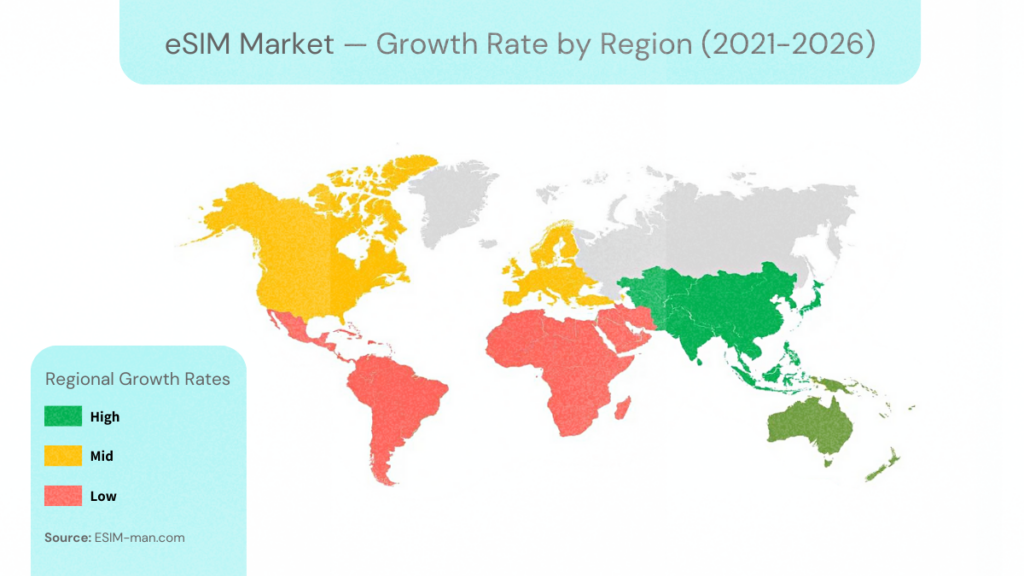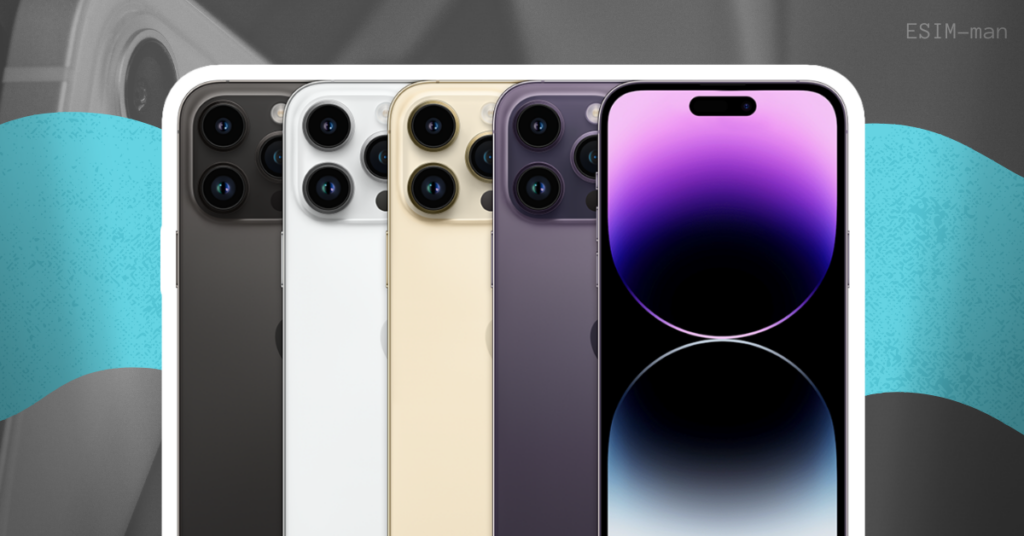Table of Contents
The world is not standing still: electronic technology is evolving and mobile carriers are working to cover the cellular area. Meanwhile, a large number of new models of phones, tablets and smart watches are being released. The quality of mobile communications is getting better every year, and humanity is on its way to abandoning physical SIM cards. According to the latest GSMA Intelligence estimates, there were around 5.2 billion unique mobile subscribers worldwide. Are you ready to support eSIM carriers?
The future of e-SIM: Why carriers prophesy a bright future for the technology
Mobile research shows that the adoption rate of MFF2: M2M form factor can vary significantly by region and market. You will be interested to know that e-SIM adoption rates are higher in countries such as the US, UK and Japan, where large telecom operators are investing in 21st century technology and offering embedded chip activation services to their customers. In other regions, such as Africa and parts of Asia, e-SIM adoption remains relatively low as countries develop and living standards are only on the way

There are several reasons why carriers with eSIM predict a bright future for the technology:
- Thanks to e-SIM, users no longer have to physically buy a SIM card to change operator or activate new plans. This provides greater convenience and flexibility, especially for people who travel frequently or spend a lot of time on business trips;
- In terms of optimising the usable space in the handset’s ‘brains’, the Embedded SIM is much smaller than the physical card, freeing up space in the device for other components such as higher capacity batteries, improved cameras and additional sensors;
- Electronic SIM technology: M2M form factor reduces the need to use plastic, which can have a positive impact on the environment by reducing the waste and carbon footprint associated with producing and shipping plastic cards;
- The eSIMs can provide enhanced security features, such as the ability to remotely lock or erase the card in case the device is lost or stolen;
IT industry developers argue that the embedded chip will become more widespread in the coming years: e-SIM-enabled devices will be better equipped to handle new and evolving mobile technologies.
How to buy an eSIM from carriers in another country: activation instructions
The process of buying and activating an Embedded SIM abroad depends on the eSIM carrier and location, we present universal activation steps for every mobile operator and every device:
- Initially, it is worth checking whether eSIM is available in the country you intend to visit and whether your smartphone is compatible with the technology. You can refer to the mobile operator’s website or their support team for details;
- Find the right plan that suits your criteria, such as price range or internet traffic packages. Then simply apply online without the need to visit a salon;
- Receive a QR-code of Embedded SIM, which the operator will give you. This will need to be scanned to activate the chip on your phone, tablet or smart watch. The data can be sent to you by email or SMS before connection;
- After reading the email, open the settings app on your device and go to “Mobile Data”. Then select “Add Cellular Plan” and scan the QR code provided by carriers that support eSIM.
It’s important to note that the specific steps and requirements for buying and activating an e-SIM in another country may vary depending on the carrier and location. It’s recommended to check with the carrier’s customer support or website for more detailed instructions.

List of carriers with eSIM support: Top 7 countries
We have prepared a special table for you, which clearly shows the countries and mobile operators that have already begun to integrate eSIM technology into their product.
| Country | Mobile carriers that support eSIM |
| United States | Verizon, AT&T, T-Mobile, Sprint |
| United Kingdom | EE, O2, Vodafone, Three |
| Canada | Bell Mobility, Rogers Wireless, Telus Mobility |
| Australia | Telstra, Optus, Vodafone |
| India | Airtel, Reliance Jio, Vi (formerly known as Vodafone Idea) |
| Japan | NTT Docomo, SoftBank Mobile, Rakuten Mobile |
| Russia | MTS, Beeline, MegaFon, Tele2 |
Summary
In conclusion, it’s important to remember that eSIMs will play an increasingly important role in the future of mobile communications. Because they offer a number of advantages that are attractive to both users and service providers. Although embedded SIM technology is currently in its infancy, many analysts point to the enormous potential of embedded chips due to the move to new MFF2-only devices: the M2M form factor without physical SIM cards. This will not only free up space, reduce plastic, but also ensure data security. You can learn more about whether eSIM technology is safe in our previous article.








